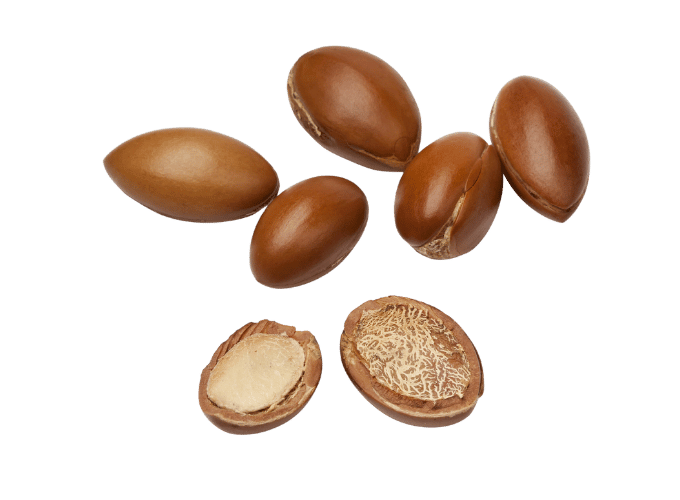Argan Oil 101: 10 Real Benefits (and 4 Myths)

Argan oil benefits include barrier support, softer hair, and a healthy glow—without a greasy feel. Below, discover the ten advantages people notice most, the myths to skip, and how to use our cooperative-crafted oil for best results.
Argan oil benefits: quick summary
- Lightweight moisture that supports the skin barrier
- Shinier, smoother hair and softer beards
- Comfort after shaving or sun/wind exposure
- Cuticle and nail conditioning
- Multi-use: face, hair, body, and beard
10 argan oil benefits you’ll notice
1) Barrier support & lasting comfort
Essential fatty acids help reduce the feeling of tight, dehydrated skin and keep moisture in.
2) Radiant, non-greasy finish
Layers well with water-based serums and under sunscreen or makeup for a soft sheen.
3) Balance for combination skin
A few drops can help skin feel more balanced when cleansing or actives leave it thirsty.
4) Post-exfoliation and after-sun comfort
Helps soothe the look of temporary redness or dryness. (Always wear SPF by day.)
5) Smoother hair, less frizz
Work a drop through mid-lengths and ends to reduce flyaways and add shine.
6) Scalp & beard softness
Use as a pre-wash scalp massage or daily beard softener to reduce roughness.
7) Stronger-looking nails & supple cuticles
Massage into nails and cuticles to keep them flexible and comfortable.
8) After-shave care for face & body
Calms that “just shaved” feel on face, legs, or underarms.
9) Body glow on damp skin
Apply post-shower to lock in hydration and boost natural radiance.
10) Makeup mixing & natural highlight
Add a drop to foundation for dewiness, or tap over cheekbones as a subtle highlighter.
Argan oil benefits for skin vs. hair
For skin: press 1–2 drops onto damp skin after water-based steps to seal in hydration.
For hair: apply 1–2 drops to dry ends as a leave-in; or use a teaspoon as a pre-wash oil for 20–30 minutes, then shampoo.
Argan oil benefits myths (4 to ignore)
Myth 1: “It’s only for dry skin.”
It’s lightweight and suits many skin types—just adjust the number of drops.
Myth 2: “Stronger smell = better quality.”
High-quality cosmetic oil has a faint, nutty aroma. A strong or rancid scent may indicate oxidation.
Myth 3: “Darker color is more potent.”
Cosmetic argan oil should look golden and clear; very dark oil can suggest impurities or culinary roasting.
Myth 4: “The cheapest bottle is fine.”
Ethical sourcing, hand-cracking, and cold-pressing are labor-intensive—ultra-low prices can mean dilution or poor processing.
How to use argan oil for best results
Face (AM)
- Cleanse → water-based serum
- Press 1–2 drops onto damp skin
- Finish with sunscreen
Face (PM)
- Cleanse → treatments
- Seal with 2–4 drops as last step
Body
Apply to damp skin after showering for maximum slip and moisture lock-in.
Beard
Work 2–3 drops through a clean, dry beard to soften and add healthy sheen.
Pro tip: Start small—a little goes a long way.
How to choose authentic argan oil
- INCI: Argania Spinosa Kernel Oil (single ingredient)
- Method: Cold-pressed, unrefined for cosmetic use
- Packaging: Dark glass to protect from light
- Origin: Sourced and bottled in Morocco—ideally from a women’s cooperative
- Texture/Scent: Light, quick-absorbing, faintly nutty
Shop the routine
Organic Argan Oil ·
Black Soap ·
Kessa Glove ·
Rhassoul Clay
Learn more (outbound resources)
Explore background on Argan oil and
UNESCO’s page on argan practices and know-how.
FAQs
Can I use it under makeup?
Yes—press 1–2 drops onto damp skin, let it absorb, then apply SPF and makeup.
Is it suitable for acne-prone skin?
Many acne-prone users like the lightweight feel. Start with 1 drop and monitor your skin.
Cosmetic vs. culinary argan oil?
Culinary oil is roasted for flavor and made for eating; cosmetic oil is unroasted and made for skin/hair.
How should I store it?
Close tightly and keep away from heat and sunlight. Aim to use within 6–12 months after opening.
Note: Patch test if you have sensitive skin or nut-related concerns. For medical questions, consult a professional.












